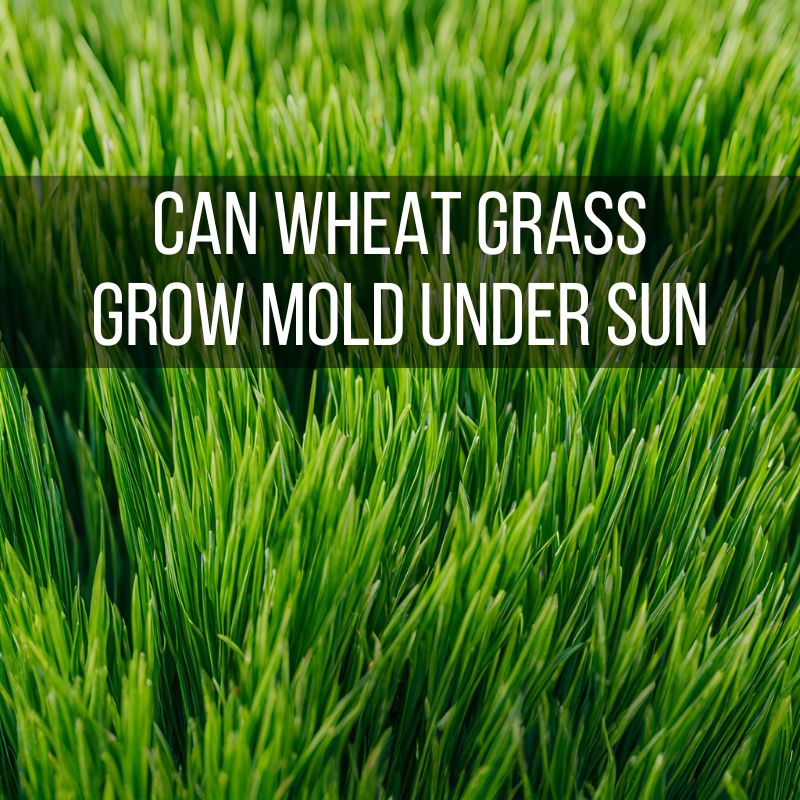
Can Wheat Grass Grow Mold Under the Sun?
Wheat grass is a popular health food known for its nutritional benefits and vibrant green color. It’s often grown at home for its ease of cultivation and health benefits. However, whether grown indoors or outdoors, proper care is essential to prevent problems such as mold growth. Here’s what you need to know about wheat grass and the potential for mold growth, especially when exposed to sunlight.
1. Conditions Favoring Mold Growth
- Moisture Levels: Mold thrives in moist environments. If wheat grass is grown in conditions where the soil or growing medium remains consistently wet, it creates an ideal environment for mold to develop.
- Humidity: High humidity levels can contribute to mold growth. While sunlight can help dry out excess moisture, consistently high humidity can still promote mold issues.
2. Sunlight and Mold Growth
- Direct Sunlight: Sunlight can help reduce moisture levels and inhibit mold growth by drying out excess moisture. However, if wheat grass is kept in an area with very high humidity or poor air circulation, mold can still develop despite sunlight exposure.
- Indirect Sunlight: Wheat grass grown in indirect sunlight or in low-light conditions may not dry out as quickly, potentially increasing the risk of mold growth. Proper air circulation and moisture management are essential.
3. Best Practices for Preventing Mold
- Proper Watering: Avoid overwatering your wheat grass. Ensure that the soil or growing medium is allowed to dry out slightly between waterings. This helps prevent the conditions that favor mold growth.
- Good Air Circulation: Provide adequate ventilation around your wheat grass. Good air circulation helps reduce humidity and allows moisture to evaporate more effectively.
- Monitor Humidity: If you’re growing wheat grass indoors or in a controlled environment, monitor the humidity levels and use a dehumidifier if necessary to keep humidity in check.
- Use Clean Containers: Ensure that containers or trays used for growing wheat grass are clean and free of mold spores. Wash and sanitize them regularly to prevent contamination.
4. Signs of Mold on Wheat Grass
- Visible Mold: Look for white, gray, or greenish mold patches on the surface of the soil or on the wheat grass itself. Mold can appear as fuzzy or powdery growths.
- Unpleasant Odor: Moldy wheat grass may emit a musty or sour smell. This is an indication that mold or mildew is present.
- Stunted Growth: Mold can affect the health of the wheat grass, leading to stunted growth or discoloration of the blades.
5. Addressing Mold Issues
- Remove Affected Areas: If you notice mold on your wheat grass, carefully remove the affected areas and discard them. Do not consume moldy wheat grass.
- Improve Conditions: Adjust watering practices, improve ventilation, and reduce humidity to prevent further mold growth.
- Clean the Growing Area: Disinfect the growing area and containers to eliminate mold spores and prevent reinfection.
Conclusion
Wheat grass can potentially grow mold if it is grown in conditions that favor mold development, such as high moisture and humidity. While sunlight helps reduce moisture and inhibit mold growth, proper care is crucial to prevent mold issues. By managing watering practices, ensuring good air circulation, and monitoring humidity levels, you can effectively reduce the risk of mold on your wheat grass and maintain a healthy crop.
